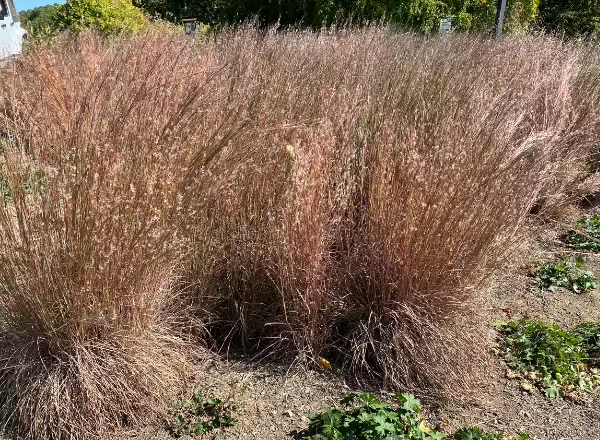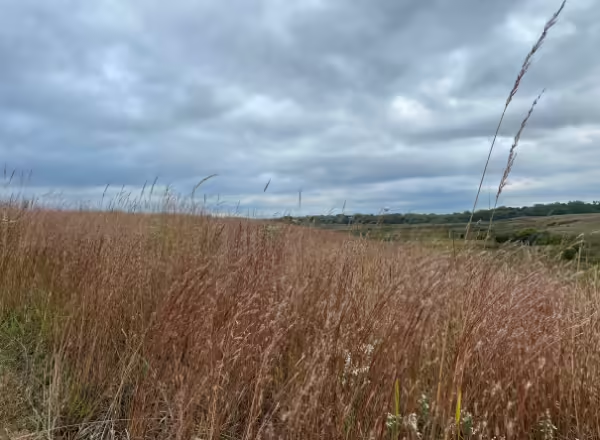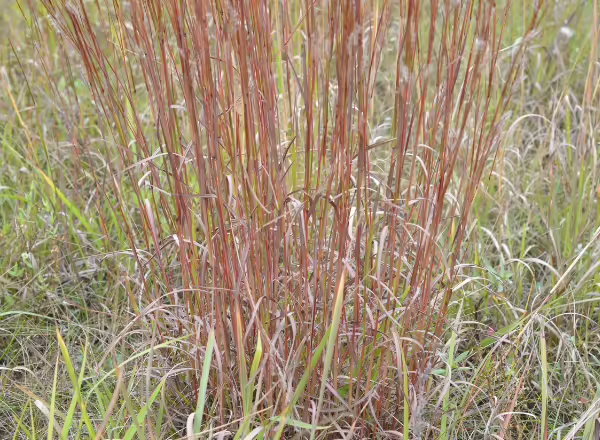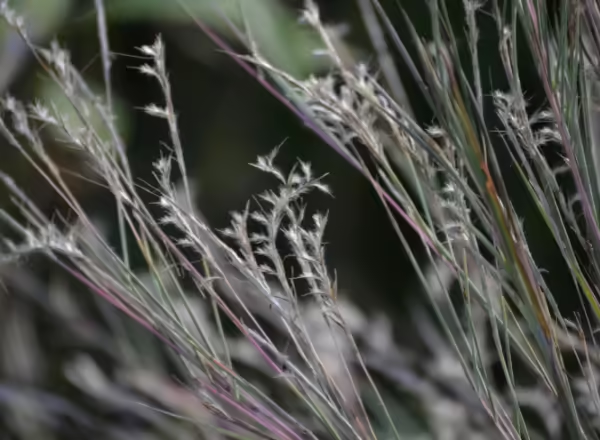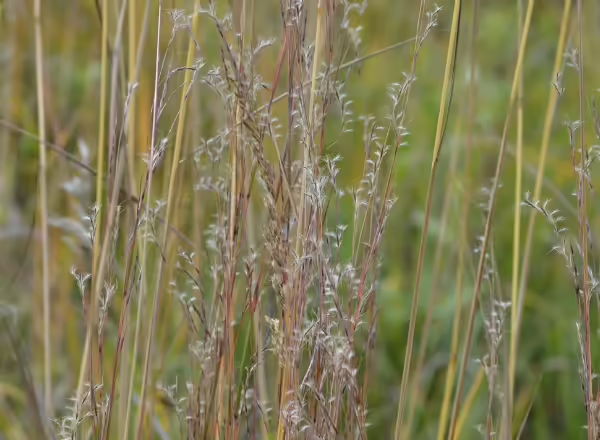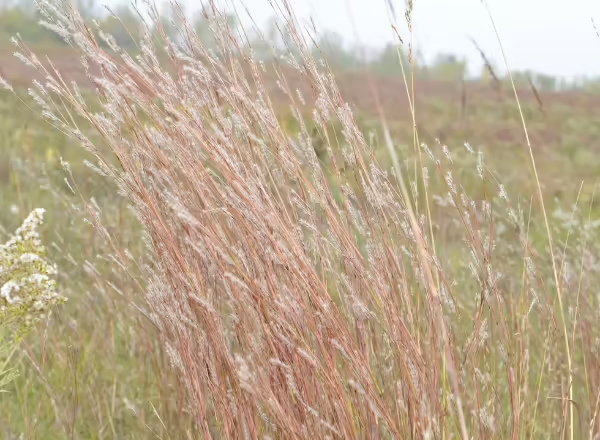A statement grass for autumn
A prairie grass commonly found throughout central and northern Illinois in prairies and prairie restorations, Little Bluestem can also be found in bluffs, glades, and savannas of southern Illinois. Many native plant gardens include this showy grass species because of its bunched growth form and great fall appearance.
Look for reddish-orange foliage
Little Bluestem, Schizachyrium scoparium, is a bunchgrass that typically stays about 3 feet tall. Its thin stems are yellow to reddish brown in color, often with red nodes. Little Bluestem has short green to green-blue leaves along its stems, and they have a membranous ligule at the base of the leaf blades where they wrap around the stem to form a sheath. The stems of Little Bluestem are a bit flattened, rather than perfectly round, which you can feel if you roll the stem between your fingers. In the fall, the foliage of Little Bluestem can turn a reddish-orange color.
Spikelets like eyelashes
This grass blooms in the late summer to early fall, producing raceme inflorescences. This means that along the stem, you will find clusters of spikelets that are held on a branch or a stalk. The spikelets (flowering units) have tufts of fine white hairs, which make them resemble eyelashes. The spikelets also have awns, which are bristle-like structures that emerge from the tips of the spikelets.
Similar grasses
Even though its common name is Little Bluestem, this grass is in a different genus than Big Bluestem, Andropogon gerardii. Little Bluestem is in the Schizachyrium genus, and it is the only species in this genus that can be found in Illinois. The most commonly confused grass with Little Bluestem is Broomsedge, Andropogon virginicus. Broomsedge has similar characteristics to Little Bluestem:
- Bunchgrass
- Membranous ligule
- Hairs at the base of the leaf blades
- Spikelets that are covered in white fluffy hairs and arranged into racemes
- Foliage that turns orange to red in the fall
But there are some key differences too:
- Little Bluestem as a whole is much more delicate in size, with shorter, thinner stems and fewer leaves.
- Broomsedge tends to form a very bushy grass clump because it has many more leaves along the stems than Little Bluestem.
- The racemes are larger and fluffier on Broomsedge than Little Blue, which again, tend to be smaller and more delicate.
- Habitat differs too – Broomsedge is typically found in poorer quality habitats like old fields and roadsides, while Little Bluestem prefers prairie, glade, and bluff habitats.
Need a refresher on grass identification terms, like ligule and spikelet? Check out this blog post!
